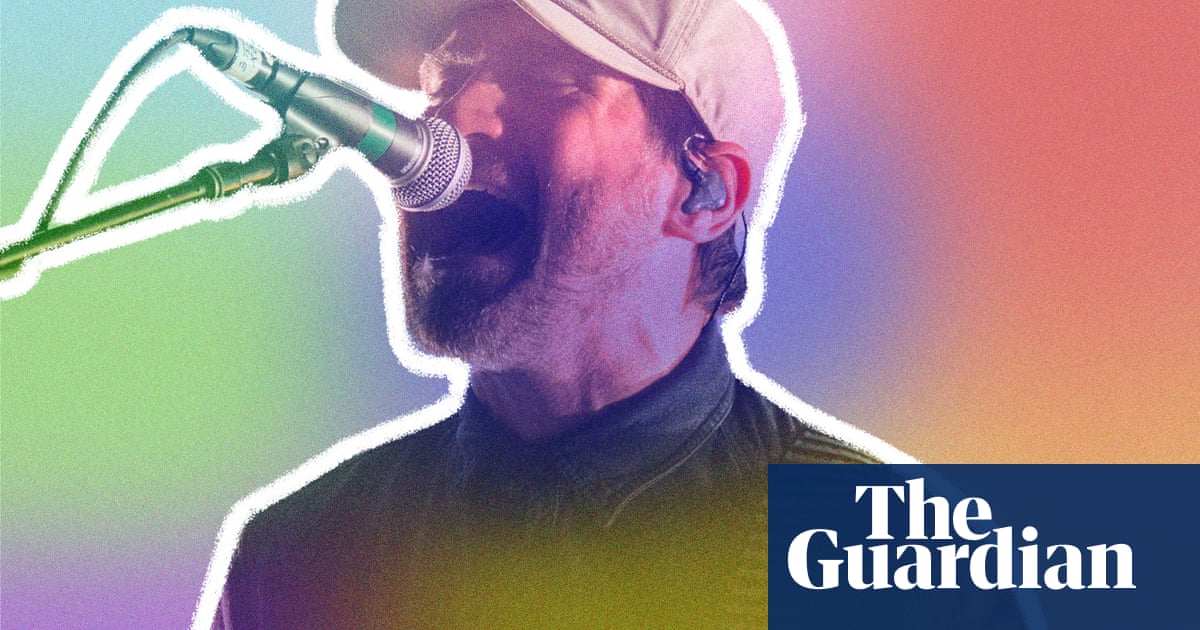When I was a teenager, in the late 00s in central Scotland, being gay was something I experienced as painful made me feel overwrought. This didn’t match the depiction of gayness I encountered in mainstream culture at the time, which was mostly very cheerful. Almost all of the gay men on my radar were comedians – figures such as Graham Norton and Alan Carr, both of whom I found funny and still admire today, but who were too easy-going and unpretentious to satisfy my desire to see myself as a tortured poet.
When I got to university, I found the representation I was looking for – solemn and beautiful – in writers such asEdmund Whiteand James Baldwin, but earlier in my teenage years I had to make do with what was available: romanticising being gay through songs about straight men falling out with their platonic friends.
It’s a small but furtive canon, halfway between the diss track and the breakup ballad. Standouts include How Do You Sleep?, John Lennon’s spectacularly mean-spirited takedown of Paul McCartney; So Long, Frank Lloyd Wright, Paul Simon’s elegiac send-off to Art Garfunkel, who was pained to discover it was about him only years after its release; several songs arising from the falling-out between the Dandy Warhols and the Brian Jonestown Massacre, and No Regrets by Robbie Williams, a song about his decision to leave Take That – and specifically Gary Barlow, if you believe the speculation. While focused on the bitter aftermath, these songs portray love between men with a tragedy and grandeur typically only afforded to heterosexual romance.
This is exactly what I wanted at the age of 14. The first buddy breakup song I ever loved was Seventy Times Seven by the emo band Brand New, which recounts a falling out between frontman Jesse Lacey and his former friend John Nolan (who later joined Taking Back Sunday and released a cutting riposte of his own). Musically it’s upbeat and effervescent, but the lyrics are venomous: it ends with Lacey urging Nolan: “Have another drink and drive yourself home / I hope there’s ice on all the roads / and you can think of me when you forget your seatbelt / and again when your head goes through the windscreen.” In hindsight, it’s a bit much.
That Seventy Times Seven directed this degree of wounded passion towards another man was revelatory: it allowed me to cast the feelings I was beginning to have as not embarrassing or shameful but the stuff of Great Art, which was how I thought about three-minute-long pop punk songs at the time.
Even after I grew out of emo, trading black hair dye for neon shutter shades, I still found myself returning to songs about straight men and their terrible conflict-resolution skills. The following year I developed an intense friendship with a slightly older boy who lived in the next town over and who was, to the best of my knowledge, entirely straight. It was the summer holidays and every night we’d stay up talking on MSN Messenger. There was nothing sexual about our relationship, but it was almost giddily romantic: we were always dreaming up plans to move to the big city together and shared the delusion that, by simple virtue of being ourselves, we were destined to become cultural icons of some description (we possessed no evident talent, so the details were left vague). Whenever we met up, there was one song we would always play, jumping around and pointing at each other as we sang the lyrics.
Like Seventy Times Seven, the Libertines’ Can’t Stand Me Now is inspired by a falling out between two best friends. It was released shortly after Pete Doherty was prosecuted for breaking into co-frontman Carl Barât’s flat and stealing a bunch of his stuff – but it is far more wistful. As per the lyrics, Barât and Doherty don’t just love each other, they are in love with each other, and the song is as much a reaffirmation of that love as a chronicle of its disintegration: to Doherty’s line “You can’t take me anywhere”, Barât replies “I’ll take you anywhere you wanna go”.
I still find this moving as an expression of forgiveness and support to someone in the throes of addiction, even if the implied reconciliation turned out to be short-lived. The song isn’t at all homoerotic, but it is romantic, and I’m glad I got to scream it in the face of a boy who, if I wasn’t exactly in love with, I cared about deeply for a three-month spell before summer ended and our friendship petered out.
When I was still in the closet, these songs and others like them allowed me to articulate emotions that had to be kept secret, and because they weren’t explicitly queer there was no chance of them blowing my cover: being into the Libertines didn’t invite suspicion, and if there was any stigma attached to being a Brand New fan it involved being an emo – a damaging enough charge in central Scotland – rather than being gay.
As a grown man, I don’t have to look to queer representation in unlikely places. But I am grateful to the music that first allowed me to accept that men can experience deep, tender and painful feelings towards each other, and to think of my own desires as serious and worthy of respect.
